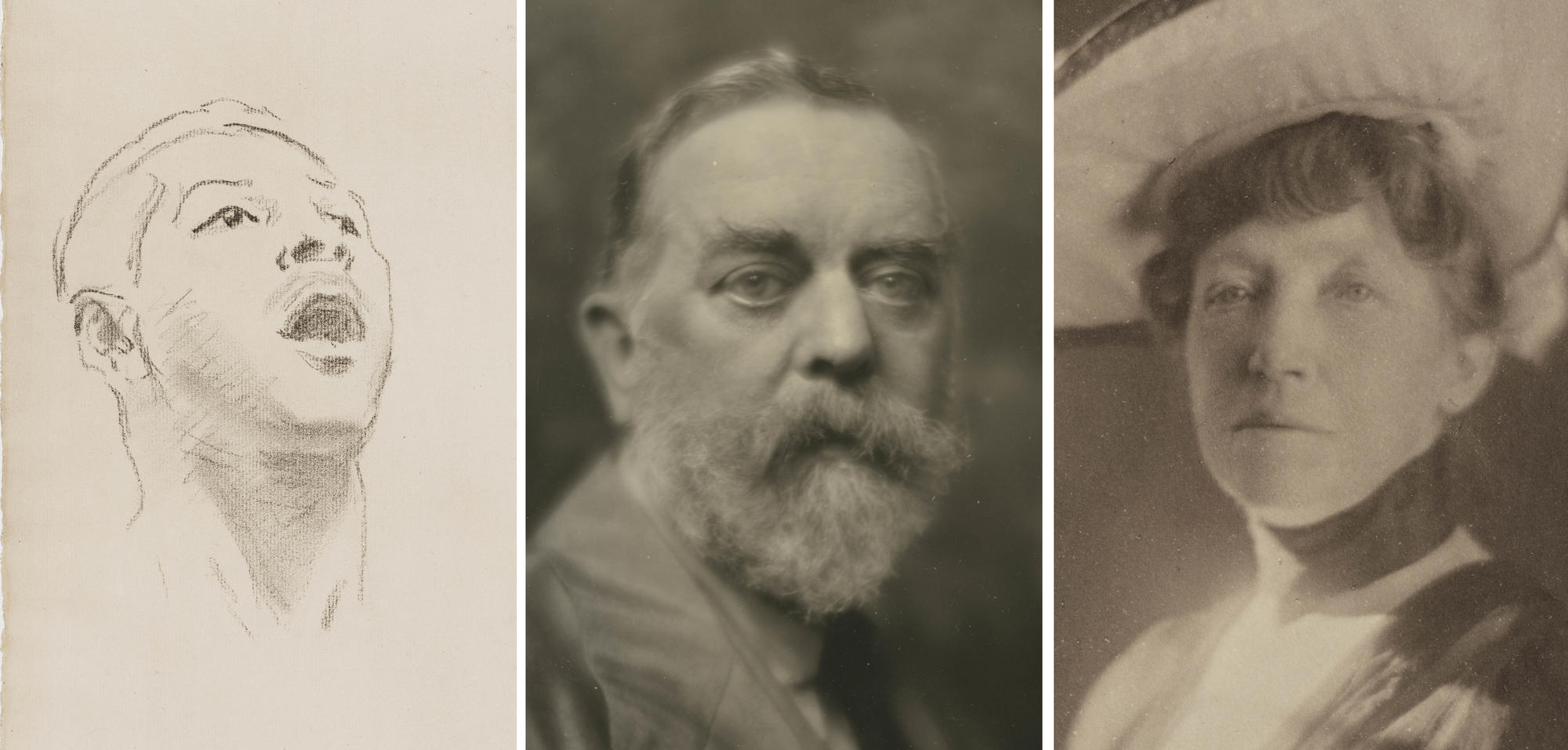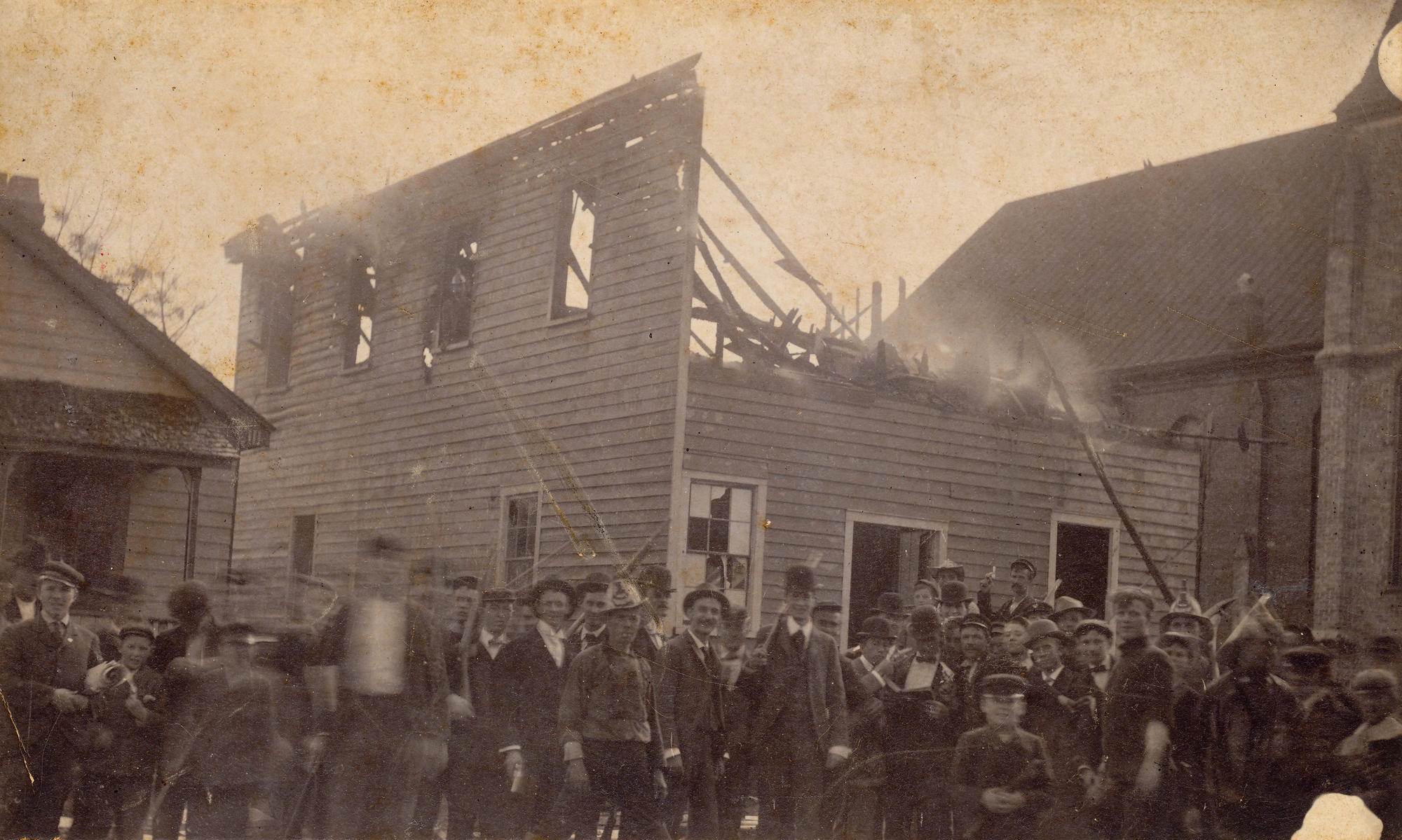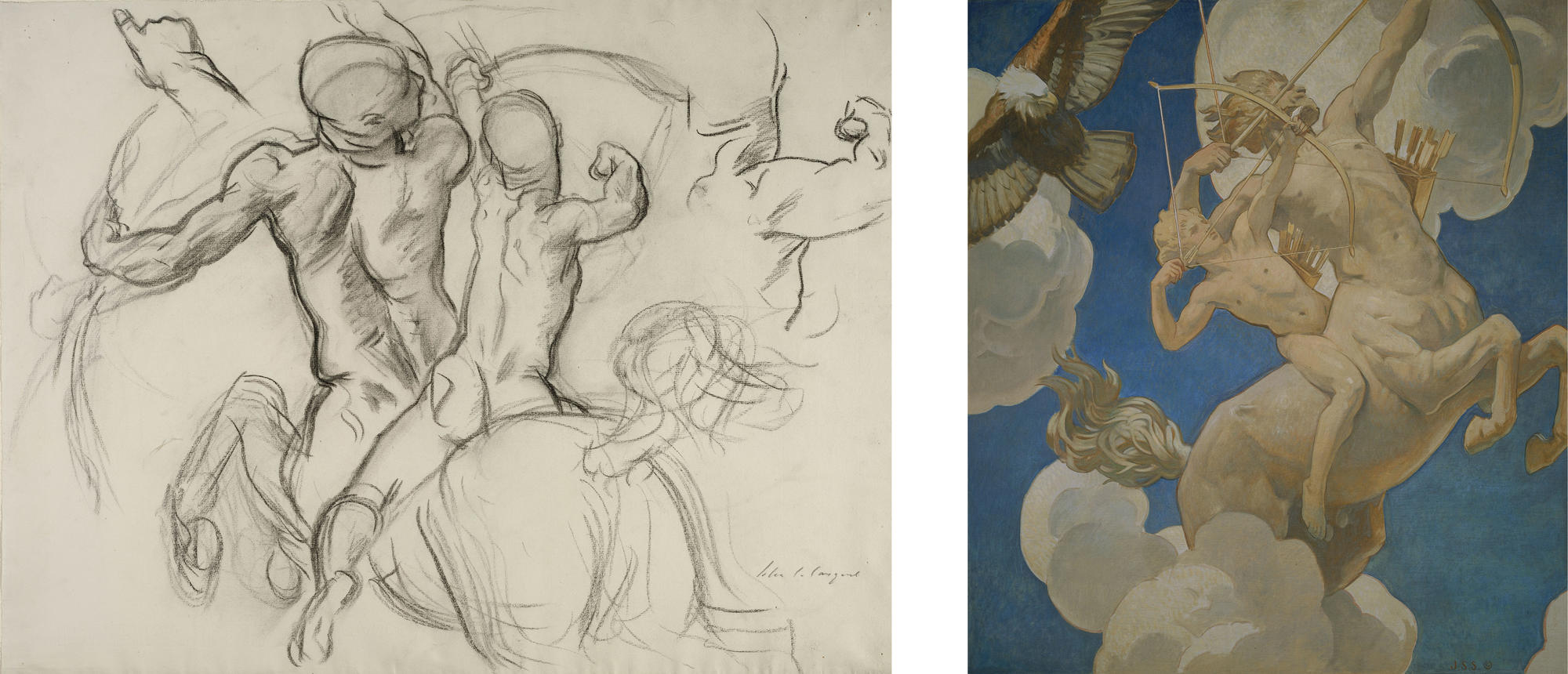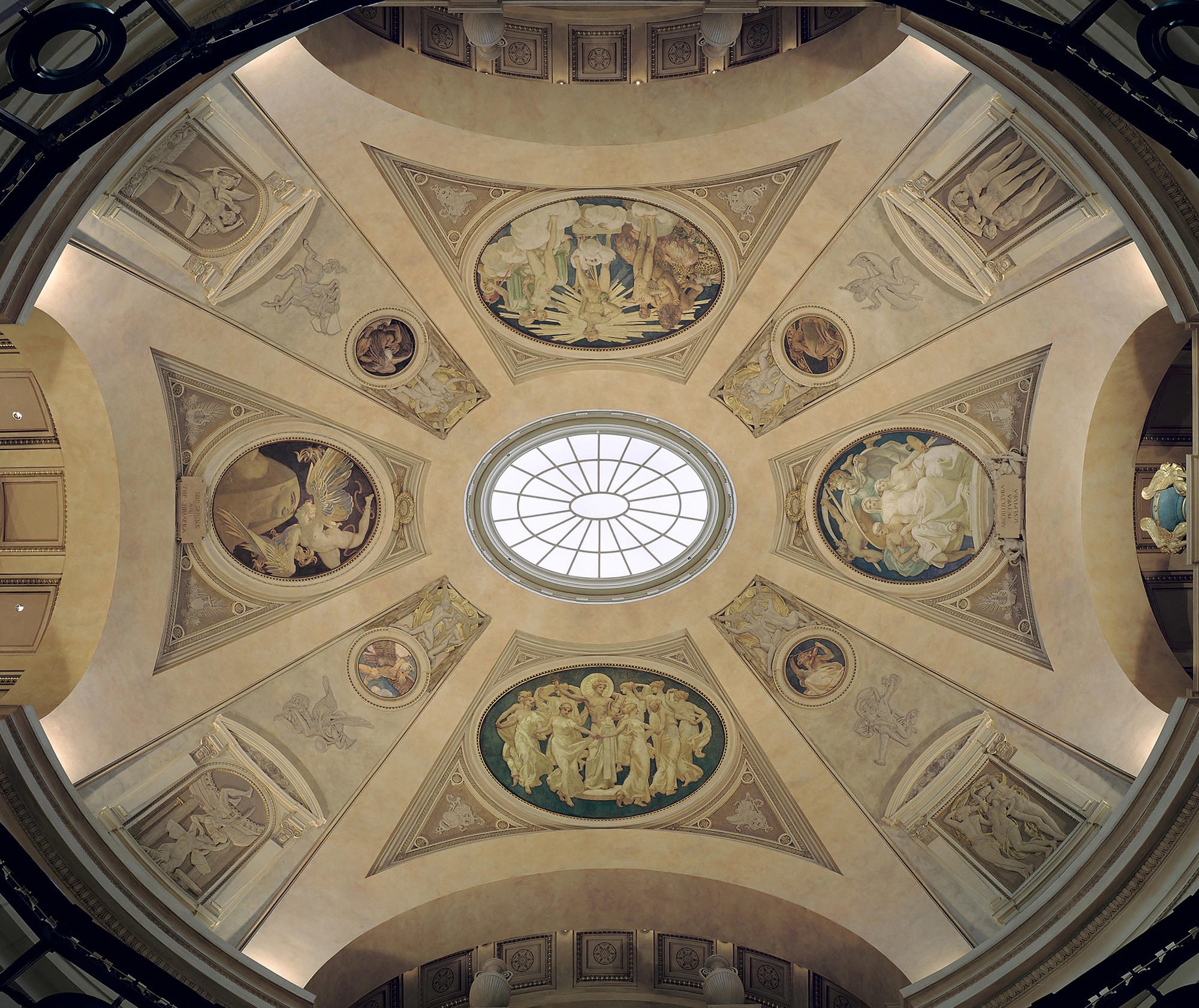
Left photograph © 2019 Museum of Fine Arts, Boston
From left to right: Thomas McKeller in John Singer Sargent’s Study for Classic and Romantic Art for the Rotunda of the Museum of Fine Arts, Boston, 1916–1921; Sidney Carter (Canadian, 1880–1956), John Singer Sargent, 1920; Adolf de Meyer (French, 1868–1949), Isabella Stewart Gardner, 1906
Born in Wilmington, North Carolina in 1890, Thomas Eugene McKeller moved to Boston in his mid-teens. One of many Black Americans to head North during the Great Migration, he was probably compelled to leave for several reasons, including Wilmington's devastating racial violence of 1898, the introduction of Jim Crow laws one year later, and, possibly, his sexual orientation.

Cabinet card by H. Cronenberg. Courtesy of New Hanover County Public Library, North Carolina Room
A group of men standing in front of the destroyed printing press of the Daily Record, a Black-owned and -edited newspaper in Wilmington, North Carolina, 10 November 1898
Segregation in Boston was enforced socially and economically, rather than legally. McKeller joined a growing community of newly arrived Black Southerners, attracted by job opportunities in hotels, on Pullman trains, and in other local service industries.
In 1916, the expatriate American artist John Singer Sargent returned to Boston from Europe for his first visit in 13 years. While residing at the city's luxury Hotel Vendome, he met McKeller, who was working as the hotel's elevator operator.

Dry plate negative Library of Congress, Washington, D.C.
Detroit Publishing Co., Hotel Vendome, Boston, about 1904
The chance encounter changed their lives forever. Sargent—recently asked to create a cycle of murals over the Fenway entrance of the city's Museum of Fine Arts—invited McKeller to model for the project. Over the next eight years, Sargent made hundreds of drawings of McKeller, not only in preparation for the museum entrance but for another commission as well, at Harvard's newly built Widener Library.

Photograph © 2019 Museum of Fine Arts, Boston
Left: John Singer Sargent (American, 1856–1925), Study for Chiron and Achilles for the Rotunda of the Museum of Fine Arts, Boston, 1916–1921; Right: John Singer Sargent (American, 1856–1925), Chiron and Achilles, 1921
Isabella Stewart Gardner contributed to Sargent's success in the United States and rejoiced in his company. Close friends and confidantes, the widow and bachelor spent much time together, sharing meals and attending shows and concerts. While Sargent worked, Gardner closely followed his progress on the Boston area murals.

Photograph © 2019 Museum of Fine Arts, Boston
The Rotunda of the Museum of Fine Arts, Boston with murals by John Singer Sargent, 1916–1921
When a stroke in 1919 left her incapacitated, Sargent arranged a preview of the MFA murals for his friend, bringing her wheelchair up in a freight elevator, and having Gardner carried onto the scaffolding in a bath chair. She frequently visited his third-floor studio in Back Bay as well, and on at least one occasion it was McKeller who carried her, with some flamenco records, up the stairs.
In commemoration of this project, Sargent gave Gardner a portfolio of ten works on paper related to the murals, the majority depicting McKeller, to be preserved in her museum. By the end of 1925, both Sargent and Gardner were dead. McKeller, then 35, had found a stable and secure job as a mail handler in Boston's Post Office. He eventually got married, purchased a home in Boston's Roxbury neighborhood, and lived there until his death. He was buried next to his wife in 1962 in Mount Hope Cemetery. Sargent’s drawings were displayed as a group for the first time in the exhibition Boston’s Apollo: Thomas McKeller and John Singer Sargent.
You Might Also Like

Explore the Exhibition
Learn more about Boston's Apollo: Thomas McKeller and John Singer Sargent

Buy the Book
Read more about the exhibition in the official catalogue

Learn about Isabella's Legacy
Read more about Isabella's connection to influential artists and musicians of her time